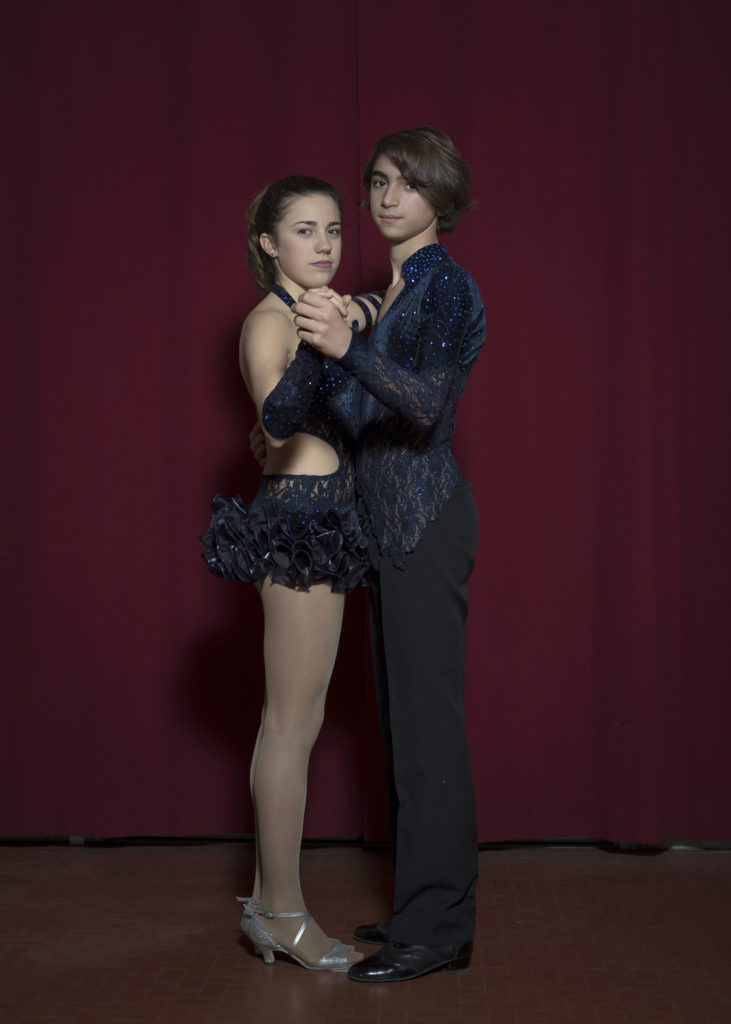As the pandemic forced me to stop travel to Japan where I usually work from, I started to look closer to home. This led to resume a side project commenced a couple of years before on liscio, an Italian folk dance. Liscio originated in the region where I was born, Romagna. As a child in the Riviera Romagnola I was exposed to this popular tradition constantly: at summer festivals, in rural stages with live orchestras, in dedicated ballrooms called balere, where my aunt would take me. I loved to watch both young and older ballerini dance, especially the sciucaren, the whip lashers, striking their whips really loud to the sound of the clarinet. Liscio is still widespread today, especially in rural areas. How did this popular tradition developed into the passion that still engages amateur dancers across generations, not only in Emilia-Romagna but all over Italy? What is the significance of folk dance in building a sense of belonging, identity and community? This portrait of two young ballerini from Milleluci dance group in the small town of Alfonsine opens my ongoing series, looking into the folk dance as a social practice today, especially among younger generations.
